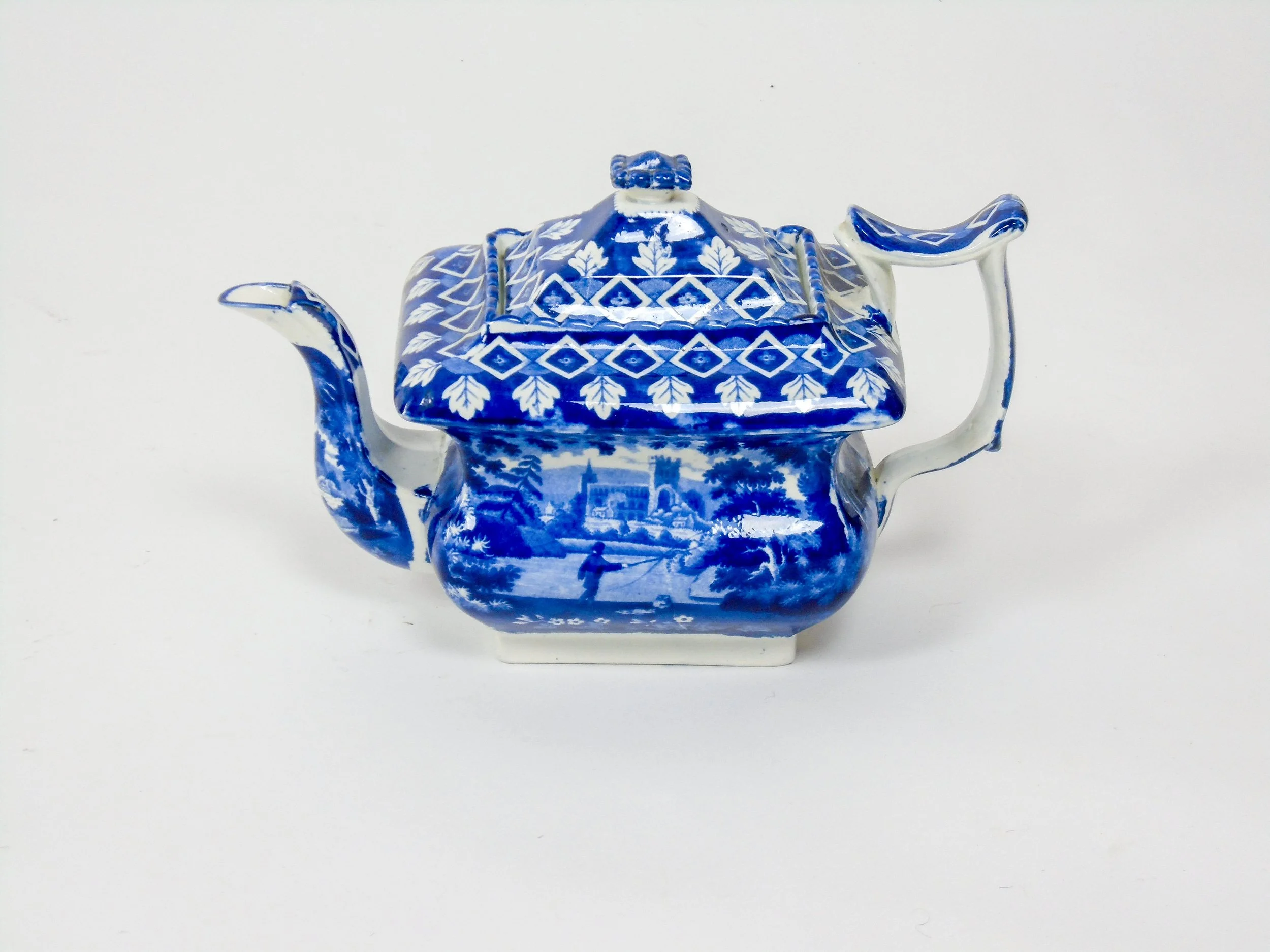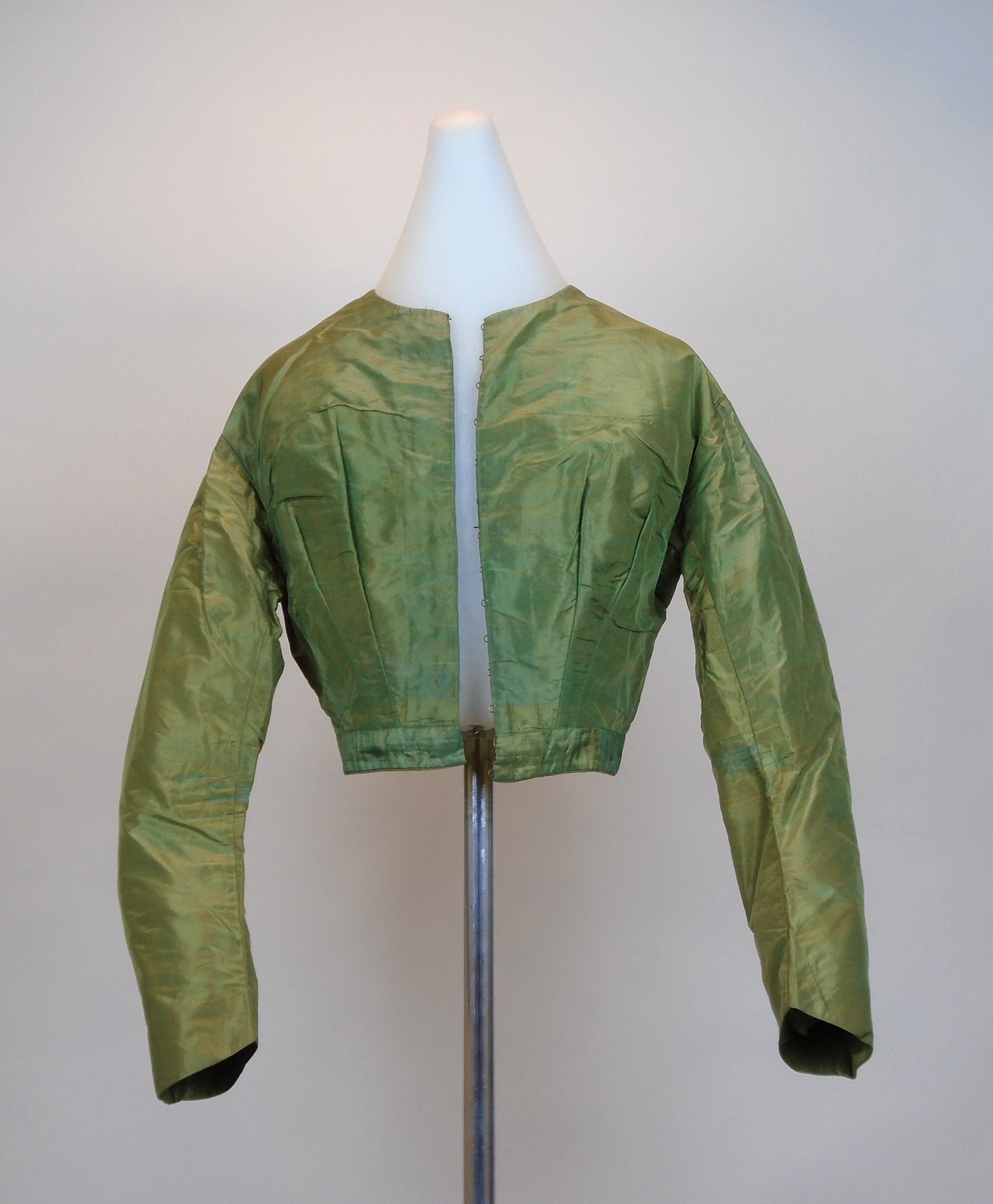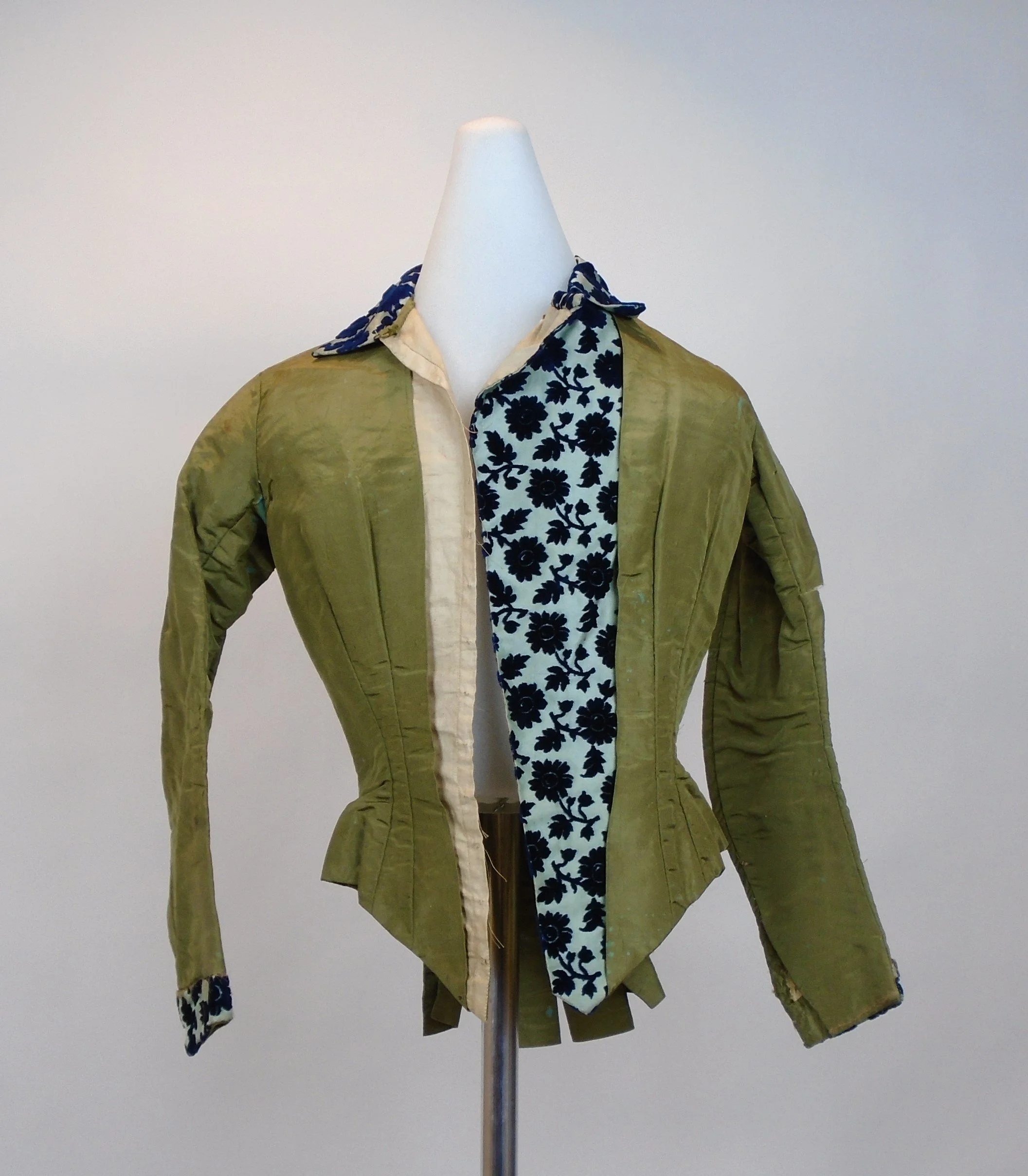Fans of Locust Grove
Physical evidence for hand fans dates as far back as physical evidence of humans does. In the ancient world fans signified status. The Aztec King Montezuma II carried a long-handled feather fan (perhaps similar to C-0108), ancient Egyptian pharaohs used palmetto fans (possibly similar to C-0463), and Chinese officials denoted their bureaucratic status with fans.
Peacock Feather Fan
c. 1900-1925
C-0108
Brown Leaf Fan
Late 19th-Century
C-0463
There are three main types of fans. The flat fan consists of a handle connected to a frame covered in stretched silk
(C-0503), a flat spread of feathers or straw (C-0127), or lacquered paper (C-0496) sometimes painted with floral designs (C-0467). Painted silk fans appeared in China as early as the 5th century AD, and by the 12th century were regarded as an art form.
Black & White Silk
Late 19th-Century
C-0503
Green Straw Fan
Late 19th-Century
C-0127
Lacquered Paper Fan
Early 20th-Century
C-0496
Painted Paper Fan
Early 20th-Century
C-0467
The second type of fan, brisé, consists of a series of sticks held together by a rivet at the base and a ribbon at the top (C-0181 and C-0466). The sticks might be elaborately carved wood, bone, ivory, mother of pearl, or other rare materials. The third type is the folding fan, made of sticks connected by a pleated piece of fabric or paper, called a leaf or monture. Like a brisé fan, folding fans are held together at the base by a rivet. The two sticks at each end of the fan, called guards, are often sturdier and more ornately decorated than the others.
Carved Wooden Fan
Early 20th-Century
C-0181
Carved Sandalwood Fan
Early 20th-Century
C-0466
Fans appeared in Europe around the sixteenth century and became firmly ingrained in women’s fashion by the eighteenth. Brisé fans, particularly of the small, ivory-carved type, were popular in the early eighteenth century, but folding fans and chinoiserie dominated in the middle of the century. Manufacturers in the East crafted “Canton fans,” imitations of traditional designs, to appeal to European consumers. Designers in the late eighteenth century became more innovative, like C-0081, a double-sided fan. C-0109 is an example of a telescopic fan, whose sticks, when closed, hid inside its handle.
Stained Mahogany Fan
Eary 20th-Century
C-0081
Black Leather Fan
Late 19th-Century
C-0109
In the early nineteenth century, small spangled fans were popular (C-0199), complementing the simpler dresses of the time. The rise of the crinoline expanded ladies’ dress widths and fan sizes. Bejeweled fans with exquisite guards and intricately painted Montures ruled. A woman’s marital status dictated the decoration of her fan. Unmarried women were restricted to light colors and small designs (C-0422), fiancées were permitted lace (C-0118), but the most elaborate was reserved for wives (C-0433).
Fan with Ivory Guards
Late 19th-Century
C-0199
Blue Painted W0od Fan
Late 19th-Century
C-0422
Mauve Fabric Fan
Late 19th-Century
C-0118
Gold Painted Wood Fan
Late 19th-Century
C-0433
Even widows had their own type: black bombazine and satin, like C-0088. Feathered fans (C-0087) became popular again in the late nineteenth century, as well as a new style, which advertised restaurants, perfume, travel companies—or bullfights (C-0191)!
Black Silk Fan
Late 19th-Century
C-0088
Feather Fan
c. 1900-1925
C-0087
Gold Embossed Fan
Late 19th-Century
C-0191
The turn of the century and the rise of the “modern woman” resulted in a downturn in the popularity of fans, although ostrich feather fans were still popular for court presentations (C-0079), and new materials like Bakelite were incorporated (C-0423). Mass manufacturing of cheap fans devalued hand-crafted pieces, but World War I signaled the final blow to the fashionable fan, leaving them as the utilitarian objects we use today.
Ostrich-Feather Fan
1920
C-0079
Fan with Bakelite Sticks
Early 20th-Century
C-0423
More Highlights































